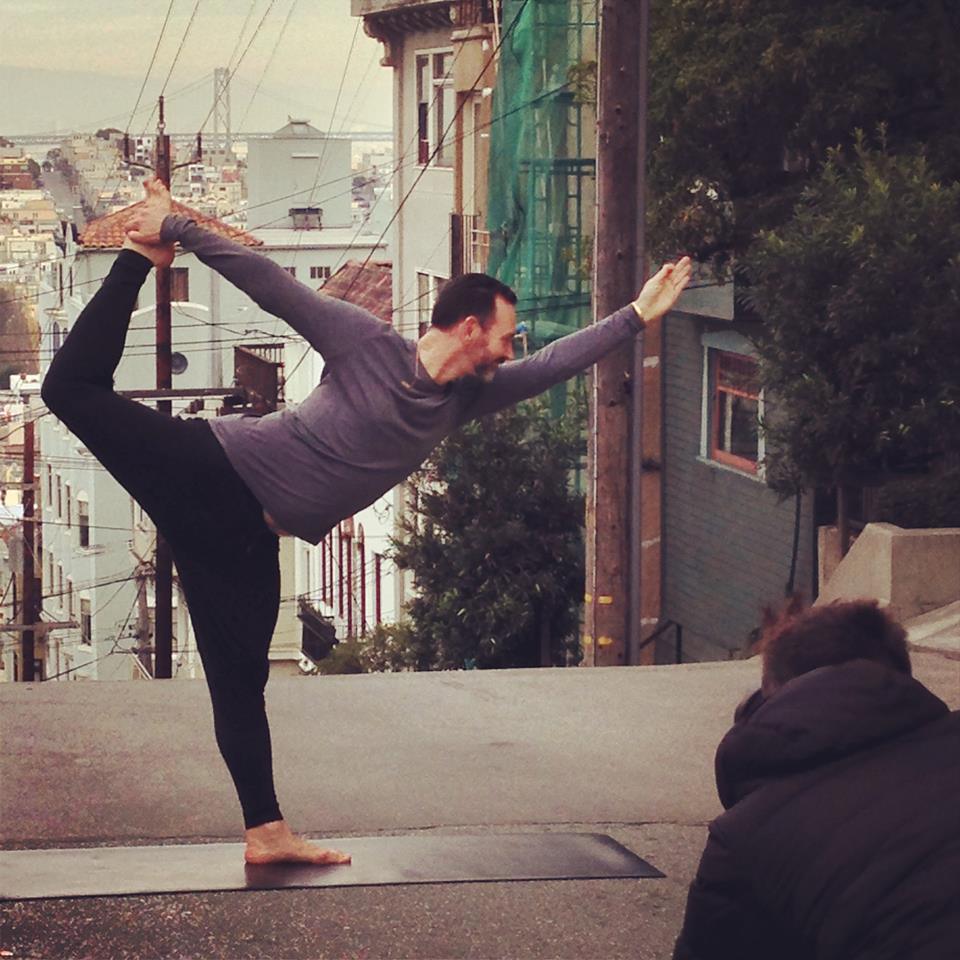The following is an interview with Martin Scott, who is the owner of Union Yoga in San Francisco. He has been a yoga teacher and group leader at Blue Osa.
Harriet: Hi, Martin. Thanks for taking the time to talk to me today. I read an interview you gave with Yogastart, and you shared a quote at the beginning, about fear, and about taking that first step to fly, on your own.
My question for you is…
How does yoga help us confront our fears?
Martin: Interesting question. At the root of the practice, I see it as a metaphor for life. When students come in and tell me they can’t or don’t do a particular pose I will suggest they just try it, you know – one step at a time. Their resistance is a reflection of something else in their life. This fear of a pose can become all-pervading, to where you almost live your life from this point of view of fear. Fear inhibits you from being able to move forward in your life. In the context of yoga you won’t continue to grow in your practice if you hold onto the fear of a pose.
H: You’ve said that being a yoga teacher is about helping people find their own inner strength, truth, and light. It must be the most rewarding part of what you do, helping people. Is that true?
M: Absolutely. I attended a seminar once where we were required to write a declaration, a statement to ourselves – simple, clear and direct – to serve as a reminder in difficult moments. Mine is: ”I stand in the light of my greatest potential, and I invite others into their own.” It’s my mantra. It resets the positivity button and keeps us moving forward toward the goals that we want for our lives. So, teaching yoga helps people find their own inner peace and calm, like windshield washers, removing the goo so they can see life more clearly. It’s “The Yoga Road of Life”.
H: I did my yoga teacher training here with Aaron at Blue Osa. At both the beginning and the end of the 30 days we were asked “What makes a good yoga teacher?” I’ll ask you the same question…
What makes a good yoga teacher?
M: Compassion. You have to have compassion for all of your students, no matter where they are, whether it’s physically, emotionally, or energetically. They made the effort to come to class and be on their mat and you have to respect where they are – in all aspects. Students come to yoga for help, and you don’t know where they’re coming from. I treat all of my students with compassion, matter what.
H: You are a student as well, of Dharma, your teacher – So, conversely: “What makes a good student?
M: Receptivity. Being receptive and having no expectations when you come to a class. Take whatever comes – there’s always something to learn, from everyone.
H: As a teacher, lending your own personality, or genuine self to your teaching is what makes your own particular classes unique. What is the “special brand of Martin” you bring to your classes?
M: I always make them laugh, somehow. Sometimes students are reserved or uncomfortable. They might look around a become self-conscious, then ego takes over. I try to add an element of lightheartedness, because when you feel that sense you’re more open.
H: One more question: All of us here at Blue Osa have witnessed the beautiful transformations that can occur over the course of a week-long retreat. What would you say to someone who might be considering a retreat but hasn’t quite committed?
M. Take the plunge! Do it. People have reservations about their yoga abilities. It’s a vacation with 2 optional yoga classes a day, in a beautiful place…and that within 48 hours you will be so unplugged and relaxed that you will be on your mat and just be like ‘aaaahhhhh’…Let go of the expectation and just go for it.
H: Finally, I watched a short video where you likened yourself to a passion fruit, which really is a funny-looking fruit. I don’t see the resemblance, but here at the Blue Osa the featured drink is with passion fruit. It’s a little unusual-looking, but you’re right – it’s delicious.
M: Someone asked me in college “if you were a fruit what would you be”?, which is an interesting question to consider. It’s a reflection of how you see yourself, (laughing…)
H: Thanks so much, Martin – we’ll look forward to seeing you soon!







